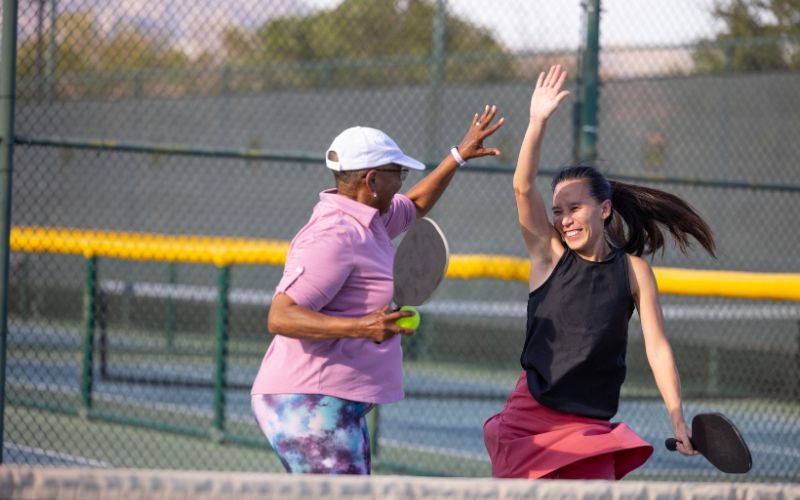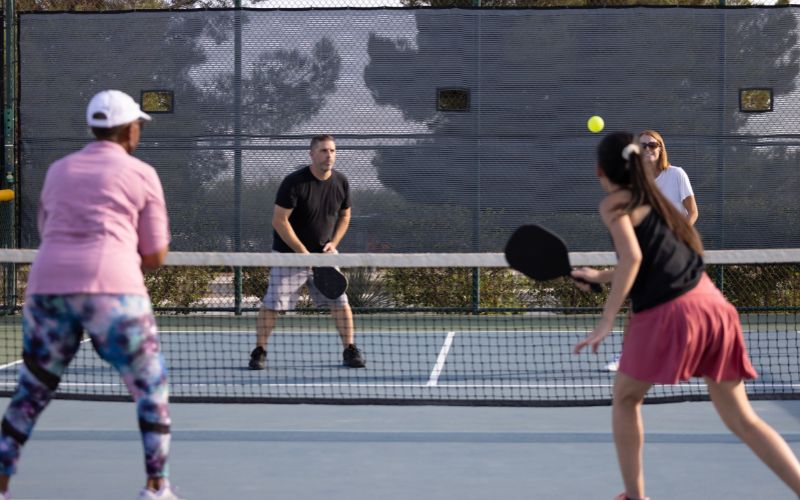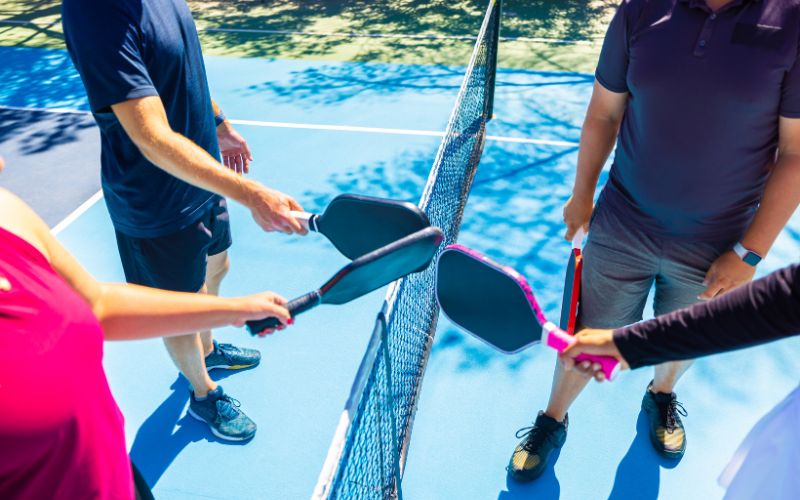Pickleball, a fast-paced and engaging sport, has gained immense popularity in recent years, especially in the realm of doubles play. As with any sport, understanding and following the rules are crucial for a fair and enjoyable game. In this guide, we will delve into the intricacies of pickleball rules for doubles, breaking down the various aspects of the game and shedding light on key regulations that players must adhere to.
Basic Rules of Pickleball Doubles
1. Serving Team and Scoring
In pickleball doubles, the game begins with the serving team on one side of the court. The serving team’s score is always announced first, followed by the receiving team’s score. The serving team loses its serve if they commit a fault, and the opposing team gets the chance to serve.
2. Serve Attempt and Faults
- The serving team is allowed only one serve attempt per turn.
- If the serving team commits a fault, either by serving out of bounds or violating any other rule, the opposing team gains the serve.
3. Court Set Up and Double Bounce Rule
- The pickleball court is divided into specific zones, with each side having its non-volley zone.
- The double bounce rule mandates that each team must let the ball bounce once on each side before playing a volley in the non-volley zone.
4. Receiving Team and Faults
- The receiving team aims to return the serve and score points.
- If the serving team commits a fault, the receiving team gains points and the serve.
5. Server Rotation and Switching Sides
- The initial serving team must maintain the same order throughout the first service sequence.
- After the first sequence, the server continues switching sides, serving from the left and right sides alternately.
Scoring Points and Winning the Serve
1. Scoring Points in Doubles
- Points are scored only by the serving team.
- A fault occurs when a team violates any rule, leading to the opposing team’s gain of points.
2. Winning the Serve
- The serving team wins the serve by consistently scoring points and avoiding faults.
- The game continues until one team reaches the predetermined winning score.
3. Doubles Scoring
- In doubles scoring, the serving team’s score is announced first, followed by the receiving team’s score.
4. Rule Violation and Losing the Serve
- Any rule violation results in the loss of the serve for the offending team.
- The opposing team then gets the opportunity to serve and score points.
Non-Volley Zone and Faults
1. Non-Volley Zone Line and Fault Occurrence
- The non-volley zone line separates the non-volley zone from the rest of the court.
- A fault occurs if a player steps on or into the non-volley zone during a volley.
2. Playing Within the Non-Volley Zone
- Players must be cautious about their position in the non-volley zone, especially during volleys.
- Stepping into the non-volley zone during a volley is considered a fault.
3. Opposite Diagonal Court and Faults
- Players should be aware of their position relative to the opposite diagonal court to avoid faults.
- Stepping into the wrong court during play results in a fault.
Service Rules and Sequences
1. Service Court and Faults
- The server must stand in the correct service court before initiating the serve.
- Failure to adhere to this rule results in a fault.
2. Service Sequence and Fault Occurrence
- The first service sequence requires the server to serve from the right side of the court.
- A fault occurs if the server initiates the serve from the wrong side.
3. Service Passes and Faults
- The server must ensure that the serve passes over the net and into the correct service court.
- A fault is called if the serve does not meet these criteria.
4. Server’s Loss and Faults
- If the server commits a fault, the server loses the serve, and the opposing team gains the opportunity.
5. Server Switching Sides and Faults
- The server continues switching sides after each point is scored.
- A fault occurs if the server fails to switch sides accordingly.
Conclusion
In conclusion, playing pickleball doubles involves a thorough understanding of the rules to ensure fair and enjoyable gameplay. From the dynamics of serving to the nuances of the non-volley zone, every aspect contributes to the overall experience. Adhering to these rules not only enhances the integrity of the game but also fosters a competitive yet sportsmanlike environment for all players. So, whether you’re a seasoned player or a newcomer to the world of pickleball, mastering the pickleball rules for doubles is essential for a satisfying and rewarding experience on the court.
FAQs for Pickleball Rules Doubles: A Comprehensive Guide
What marks the beginning of a pickleball doubles game?
In pickleball doubles, the game initiates with the designation of one team as the serving team. They start on one side of the court, and their score is the first to be announced, followed by the receiving team’s score.
How many serve attempts does the serving team have in pickleball doubles?
The serving team is permitted only one serve attempt per turn. Any fault during this attempt results in the opposing team gaining the serve.
What is the significance of the double bounce rule in pickleball doubles?
The double bounce rule requires each team to let the ball bounce once on each side before engaging in a volley, emphasizing fair play and strategic positioning in the non-volley zone.
How is scoring handled in pickleball doubles, and who gets the chance to serve?
Points are scored exclusively by the serving team, and a fault committed by the serving team leads to the opposing team gaining the serve, creating a dynamic interplay between scoring and serving opportunities.
Can the initial serving team change their order during the game?
The initial serving team must maintain the same order throughout the first service sequence. Subsequently, the server continues switching sides, alternating between the left and right sides after the initial sequence.






